Green Goods: Bulbs…More than Just Spring
In the American Midwest, Northeast and areas with similar climates, the great majority of tulip, daffodil, crocus and hyacinth bulbs fill the months of April and May with glorious color and sweetness after our long, cold and dreary winters. But let’s not assume that these are the only months that can benefit from bulbs in the landscape.
After the major groupings of spring-flowering bulbs are just a memory, other bulb varieties can be enjoyed through the late spring, summer and even into the autumn months. Many of these bulbs are underutilized and can really add drama and character to an ordinary landscape.
Wood hyacinths. Scilla hyacinthoides hispanica (previously known as Scilla campanulata), bloom in late spring with nodding bell-shaped blue, pink or white flowers. As the name indicates, these plants prefer a wooded setting, so they would be excellent under deciduous trees in an organic soil that stays on the drier side.
Allium. A large category of very diverse flowers comes under the heading of allium. Varying from softball-size flower heads to small plants more suitable to a rock garden, alliums are not attractive to deer and squirrels, which will have to be a consideration as suburbia continues to impinge upon more rural areas.
Allium moly is about 10 inches tall with bright-yellow flowers and thin foliage. Allium oreophilum is similar, with rose flowers. Allium neopolitanum is about 12 inches tall with white flowers. These three alliums can fill a space and time in the garden just after the last spring bulbs and before the annuals are at their peak.
Allium sphaerocephalon, also commonly known as drumsticks, has a distinctive burgundy color and egg-shaped flower head. At 24 inches tall, with smaller flower heads, Allium sphaerocephalon is beautiful when planted to bloom above lower-growing annuals and perennials. It is also really attractive in mixed flower bouquets, so be sure to plant a few more for bringing indoors. Make sure to plant these in larger groupings to make the best showing.
The larger globe flowered alliums are probably the best known and most popular. There are many options in this category, but the most recognizable of the purple globes is the Allium giganteum at 48 inches tall. For a large white variety try allium ‘Mount Everest’, which is 44 inches tall with 4-inch flower heads. If you’re looking for an unconventional and intriguing bloom, plant Allium schubertii. At 20 inches tall, this rose/purple flower head is loosely packed with florets of varying lengths that give it a very spidery appearance.
Camassias. Relatively unknown for the landscape are the camassias. These are native bulbs that are useful because they can be planted in moist and clay soils. The flowers are spiky with small florets along the stems. Camassia quamash is 14 inches tall with blue flowers and striped foliage. Camassia cusickii, at 30 inches, has pale ice-blue flowers and waxy leaves. At 32 inches, Camassia leichtlinii Semiplena has creamy white, semi-double flower spikes. These camassias bloom late spring/early summer.
Lilies. Lilies are certainly some of the best-known flowers in their cut form but should also be thought of as a workhorse for the garden where taller splashes of color could be used. They have a dramatic color range and many plant heights, can be planted in spring or fall, bloom reliably for years and some are very fragrant. The earliest to bloom are the Asiatic lilies, with outward-facing flowers and the widest color range. Species lilies have a more informal look, with smaller flowers and almost a wild feel. Tiger lilies are dependable perennials that come in many wild colors with many dark spots; the flowers are fragrant with recurving petals. Trumpet lilies are tall summer beauties, striking with their huge trumpet-like flowers and usually come in a range of pastel colors. Oriental lilies have a more limited color range, but their stems are tall and their fragrance is hypnotic in the garden. These lilies are great as centerpieces in the landscape or in a bouquet. Lycoris. Lycoris are also known as surprise lily or resurrection lily. They are known by these names because after the foliage matures in the spring and summer, the flowers seem to erupt from the bare soil, thus our surprise. These bulbs have been imported from their native China and Japan, should be planted in the fall and will bloom late summer to early fall. Lycoris squamigera is pink and hardy for colder climates. Lycoris radiata, a pure red, and Lycoris aurea, a yellow, are not as hardy in colder climates and should be planted with caution. A sunny location is preferred.
Crocus. Just when you start thinking about mums, small surprises could be popping up if you prefer something more unusual. Fall-blooming crocus look surprisingly similar to their spring relatives but bloom in September and October. Crocus speciosus are lilac blue in color and very easy to naturalize. Crocus sativus are lilac purple and are popular as the source of the spice saffron, which is used extensively in Asian and Mediterranean cooking. Both fall crocus are 4 inches tall and would prefer to be planted in a sunny site with a light mulch.
Colchicum. Fall-blooming colchicum look like large crocus flowers, but again, they bloom in September and October. Be sure to let the leaves ripen and disappear so the flowers will return again in the fall. Colchicum ‘Lilac Wonder’ is 8 inches tall with large lilac flowers. Colchicum ‘Water Lily’ is also 8 inches tall with striking pink double flowers that do make one think of a land-locked water lily. Be sure to order these bulbs early, and plant them as soon as they arrive in the fall so they will bloom that year.
Bulbs offer such large variations in the landscape, but all too often, we are only thinking in terms of spring and tulips. Let’s open up our time frame and color palette so that plantings reflect the wide range of beautiful, unusual and relatively care free bulbs that are widely available.
Nigella
Nigella papillosa ‘African Bride’ is a bedding plant that has 11?2- to 2-inch white flowers with black centers. ‘African Bride’ is a single-flowering nigella that flowers June-August. It has an erect form that reaches a height of 191?2 inches and a spread of approximately 4-5 inches. K. Sahin Zaden B.V. 310 172 447 777. Write in 1526
Pansy
Pansymonium is a collection of exotic and unusual pansies, presenting an enhanced look and giving more life to a popular, friendly-faced flower. New colors have been added to the three categories in the collection: a large-faced pansy called BigShot Pansies; the lacey, frilly Flamenco Pansies; and Hot Chilly Pansies, named for their incredible tolerance and staying power in extreme temperatures, especially hot climates. All three lines are cold hardy and suitable for very early spring. Fernlea Flowers Ltd. (800) 265-6789. Write in 1531
Penstemon
Penstemon x mexicale ‘Sunburst Ruby’ is a versatile perennial seed strain that originates from a cross between a Mexican and U.S. species. ‘Sunburst Ruby’ has survived winter temperatures as low as -13° F and doesn’t shrivel in the summer heat and humidity. A profusion of white-centered, ruby-red, tubular-shaped blossoms are held on top of sturdy, 16-inch stems June-August. This penstemon is ideal for rock gardens, mixed planters or borders. Jelitto Staudensamen GmbH. 49 507 198 290. Write in 1525
Snapdragon
‘Frosted Dawn’, an Antirrhinum majus nanum, has variegated foliage and a long flowering season. Its final garden height is 12 inches. ‘Frosted Dawn’ is a hardy annual with a mixture of cream-splashed foliage and soft-pink flowers with a hint of white. Plants form neat, compact mounds and are ideal for borders and containers. Thompson & Morgan Limited. 4 401 473 688 821. Write in 1524
Viola
Velour Viola x williamsii resists high temperatures and is ideal for summer plantings. New to the Velour series are Deep Blue, Jester, Primrose, Orange, Blue Dawn, Sky Blue and Frosted Chocolate. Height will reach 4-6 inches, and flower size is approximately 1 inch. Floranova. (574) 674-4200. Write in 1528
Buyers guide
The 2005 Buyers Guide is a free catalogue that contains lots of useful information, including a nursery location map of more than 85 wholesale nurseries supplying more than 2,200 different varieties of foliage, flowering material, woody ornamentals, trees, palms and tropicals. Palm Beach Wholesale Growers Association. (561) 278-5452. Write in 1530
Delphinium
A bedding plant and cut flower, Delphinium consolida ‘Chorus Violet’ has only one flower on each stem with no spike, much like a spray carnation. Violet has double flowers that will appear between June and August. Its upright form gives it 47-59 inches in height and a diameter of 71?2-12 inches. American Takii. (831) 443-4901. Write in 1521
Rose
The new rose, ‘Black Bacarra Meidebenne’, is upright and has a small flower size. It has dark-green, semi-glossy foliage and a petal count of 45. This rose is used in cutting gardens, single plantings and mixed beds with perennials, shrubs and roses. Meilland Inter-national. (800) 457-1859. Write in 1527
Wreath
Freshly-cut Pacific Northwest noble fir branches give this wreath its lush blue-green color and attractive scent. The wreath includes blue-berried juniper, red canella berries and incense cedar, and is accented with ponderosa pine cones. Many seasonal products are available, including wreaths, swags, centerpieces, garlands, mantelpieces and holly. Dinihanian Floral Products. (800) 733-9732. Write in 1529
Scotch heather
Calluna vulgaris ‘Amethyst’ has a mass of long-lasting, large, purplish-crimson buds that remain closed. It reaches 12 inches high and 18 inches wide and works well along paths or as a groundcover. Hines Horticulture. (800) 777-1097. Write in 1532


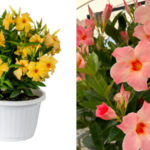


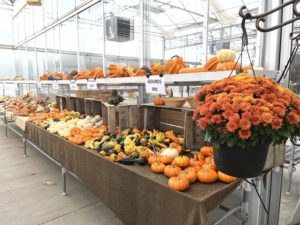
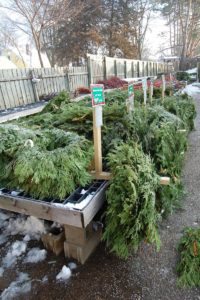
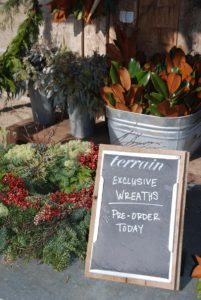
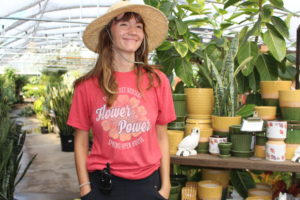


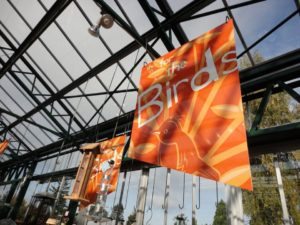
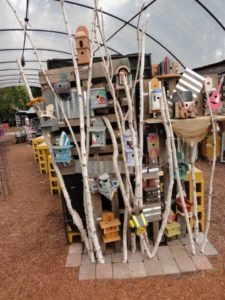

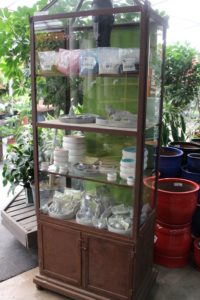

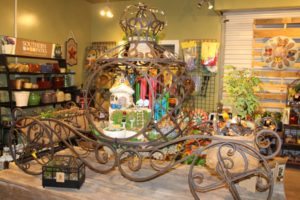
 Videos
Videos





